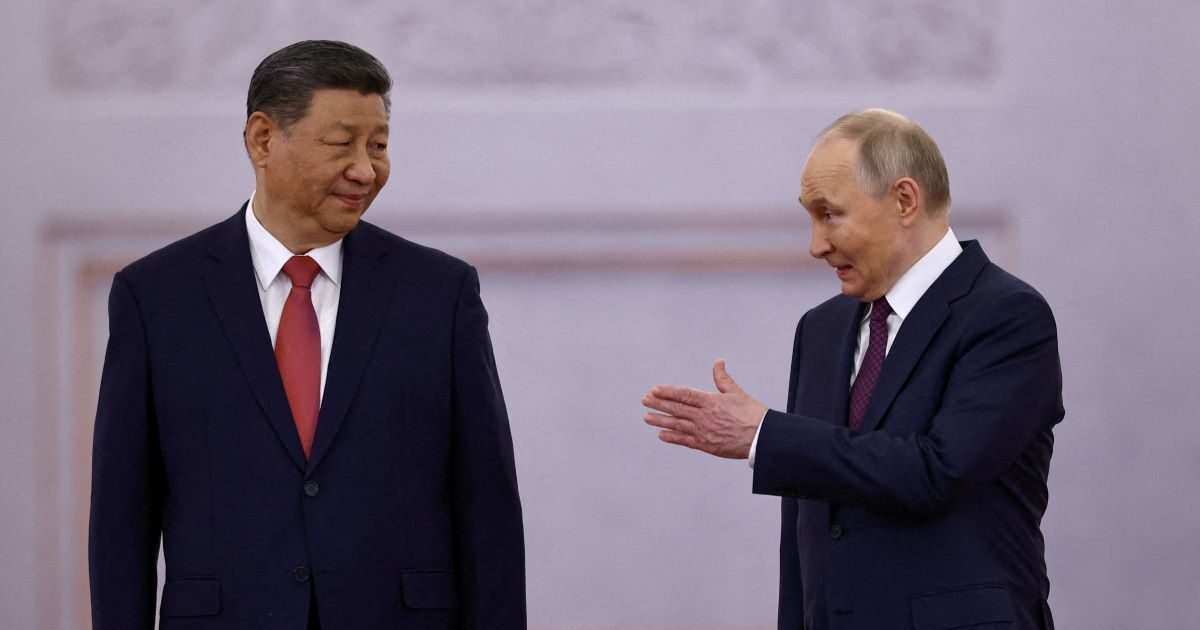Step forward in economic relations Russia – China was the official visit of China’s leader, Jig in Moscow on the occasion of the 80th anniversary of the end of World War II.
China will stand by Russia against the “hegemonic persecution of the West”. “Mutual political confidence between China and Russia becomes deeper and the links for a pragmatic cooperation are becoming stronger,” Xi Jinping said.
More specifically, according to a joint survey of the MICS Economic Institutes, OSW. Swedish National Center and Sceeus, the 4 fields in which the progress in Sino – Russian economic relations appear to be:
1. Russia -China Relationships behind Putin’s Putin ‘
China -Russia bilateral trade has increased steadily over the last decade and has intensified by the Russian invasion of Ukraine. In 2024, total trade reached US $ 245 billion, more than twice the 2020. The trade balance was relatively balanced in value, with only one small Russian surplus. However, it is structurally imbalanced by the types of goods moving.
Russia’s exports to China consist mainly of fossil fuels and other natural resources, while China’s exports consist of processed products such as cars, tractors, electronics and other consumer products. The value of Russian exports is therefore sensitive to unstable energy markets and much of its increase in recent years is due to the highest energy prices.
2. China has become a basic market for Russian fossil fuel exports
Russia’s energy exports to China are the backbone of their bilateral trade, steadily increasing both in value and in volume. After 2022, the China market functioned as a safety net, allowing Russia to redirect the exports of fossil fuels to the West.
However, slowing growth rate in 2024 highlights political and economic restrictions on further expansion. In addition, the value of these exports is still largely dependent on global energy prices.
3. Oil dominates Russian exports to China, reaching a historical high in 2024
Russian oil exports to China increased from 2022 onwards, reaching over 108 million tonnes in 2024 – an increase of about 30% from 2022.
The growing share of Russian oil on China’s imports is largely a consequence of Western sanctions, which forced Russia to redirect crude oil exports – even with some discounts. While China has become a key buyer, the value of this trade remains particularly sensitive to price fluctuations.
Russia’s carbon exports to China are steadily increasing, with remarkable acceleration in 2023 due to western sanctions.
As Russian exporters lost access to EU markets, they intensified the missions to China. However, after reaching a historical high in 2023, tumors decreased in 2024, indicating some restrictions on further growth due to the increase in domestic production in China and the differentiation of carbon imports. This chart shows the volume of Russian carbon exports to China in millions of tonnes.
Russian exports LNG to China are steadily increasing, with a temporary reduction in 2021 due to pandemic -related restrictions. Chinese imports of LNG from Russia were overflowed between 2019 and 2024, reaching a record of 8.3 million tonnes. This increase is aligned with China’s efforts to replace carbon with natural gas in its energy mixture.
Russia began exporting gas through pipelines to China in 2019 with the launch of the Power of Siberia-1 pipeline, which is expected to reach its full capacity of 38 billion cubic meters a year by 2025. China has become a critical market for Russian gas. However, despite the increase in exports, Russia needs additional pipelines to further extend its market share.
So far, China is hesitant to approve new projects, while Moscow is trying to promote the Power of Siberia-2 project with its 50 bcm/year design capacity.
4. Double -use Chinese exports help to maintain Russia’s war effort
Double -use items from China to Russia increased by the end of 2021, possibly due to the accumulation of stocks and production of production at the end of the year.
Exports were subsequently reduced after the invasion of Ukraine in February 2022 amid sanctions on sanctions, but recovered quickly, remaining at historically high levels throughout 2022 and 2023. A new decline occurred after the US Treasury announcement for December 2023. Military -industrial base of Russia.
However, Chinese exports recovered in the second half of 2024, indicating adjustments to bypass these restrictions.
As a result, dual -use items from China to Russia have once again exceeded $ 4 billion in 2024.
The data refers to dual -use items included in the high priority list, which was jointly developed by the United States, the European Union, Japan and the United Kingdom. The list categorizes 50 species, each specified by a six -digit Harmonized System (HS) code, in four stages. The full list is available on the US Office and Security Bureau website. Prices represent a 3 -month mobile average and have been adapted to reflect the amendments to the HS 2022 nomenclature.
